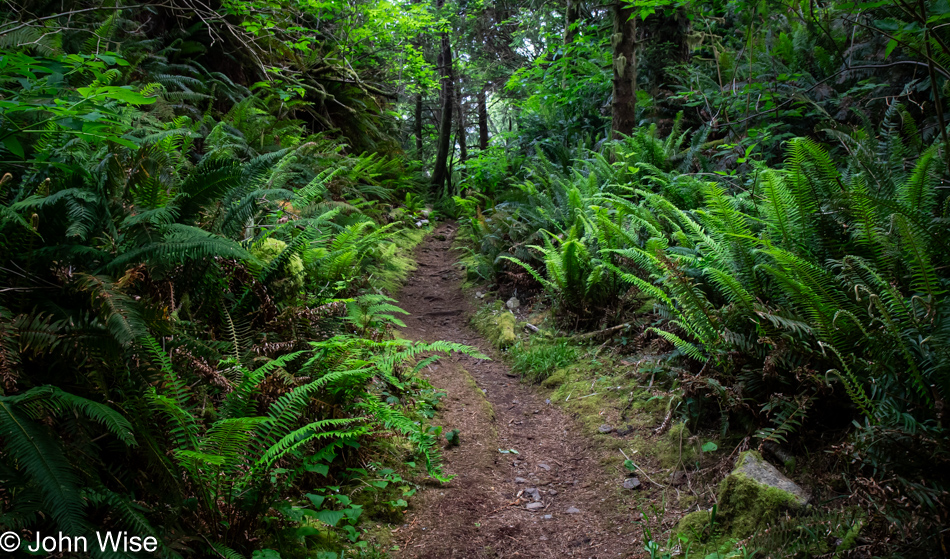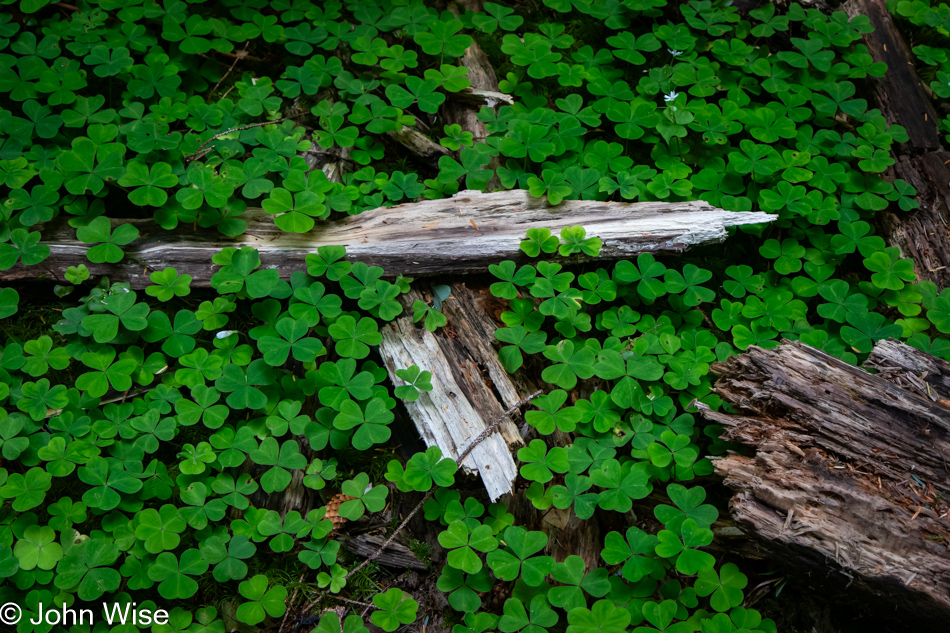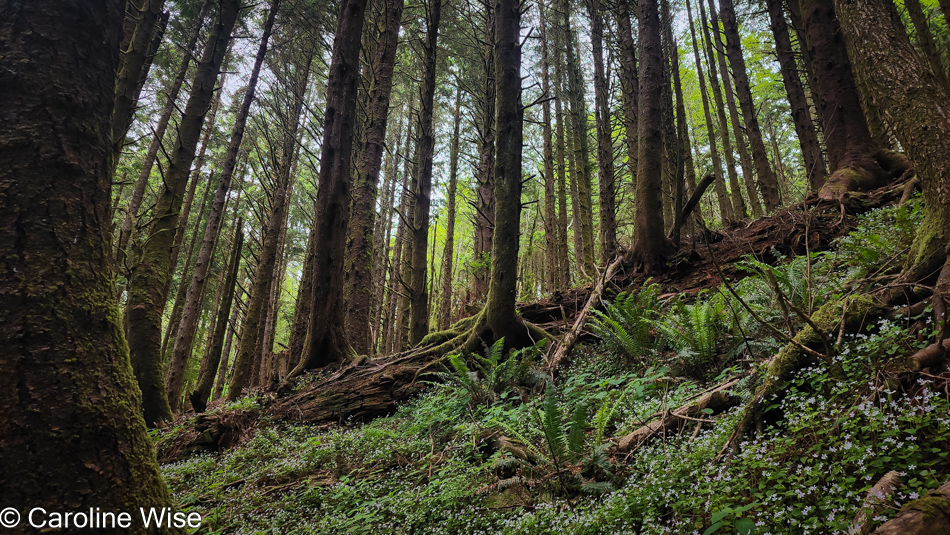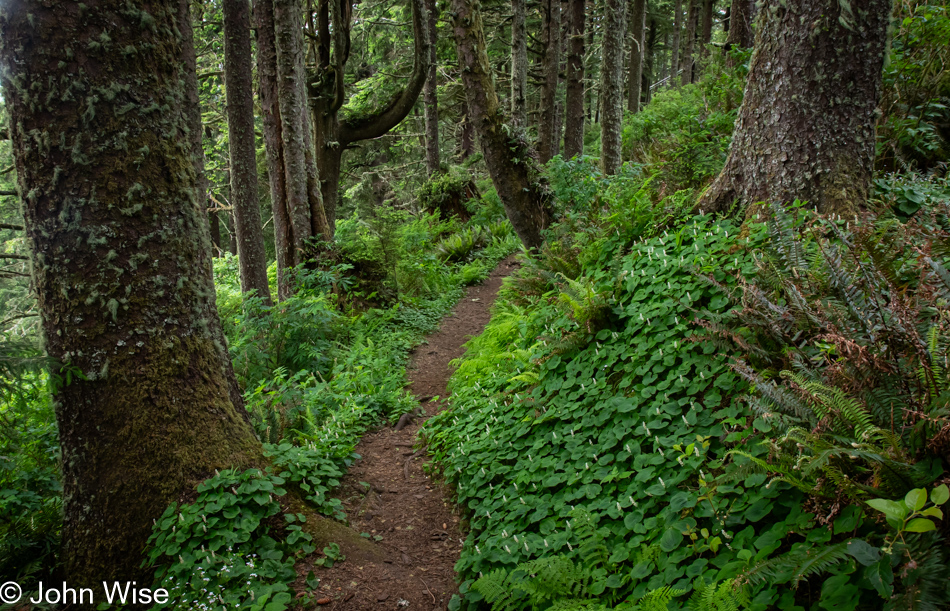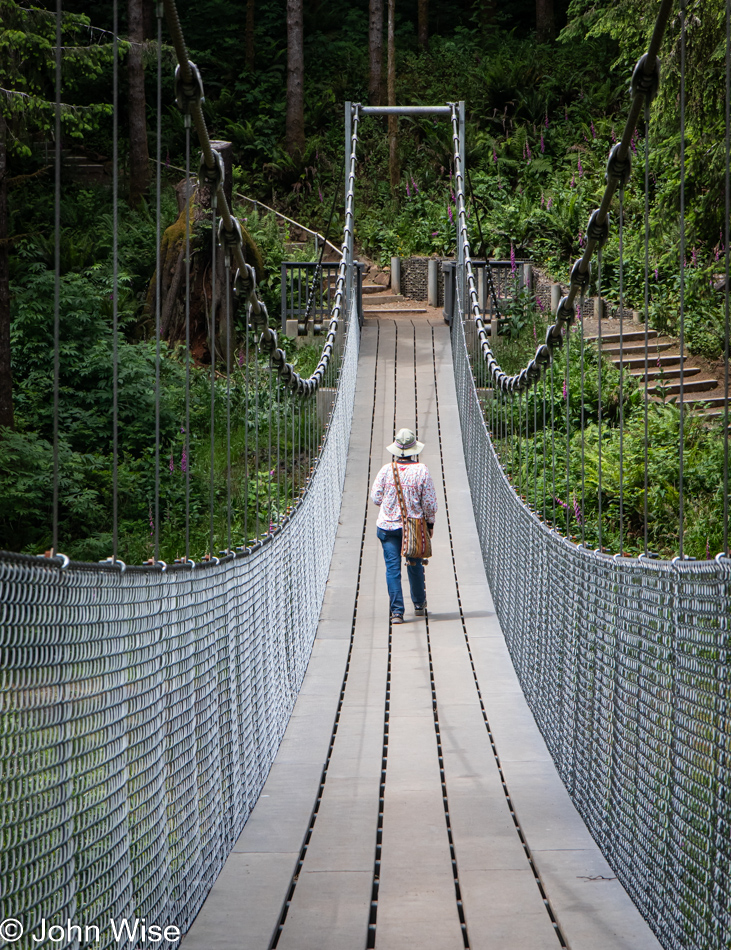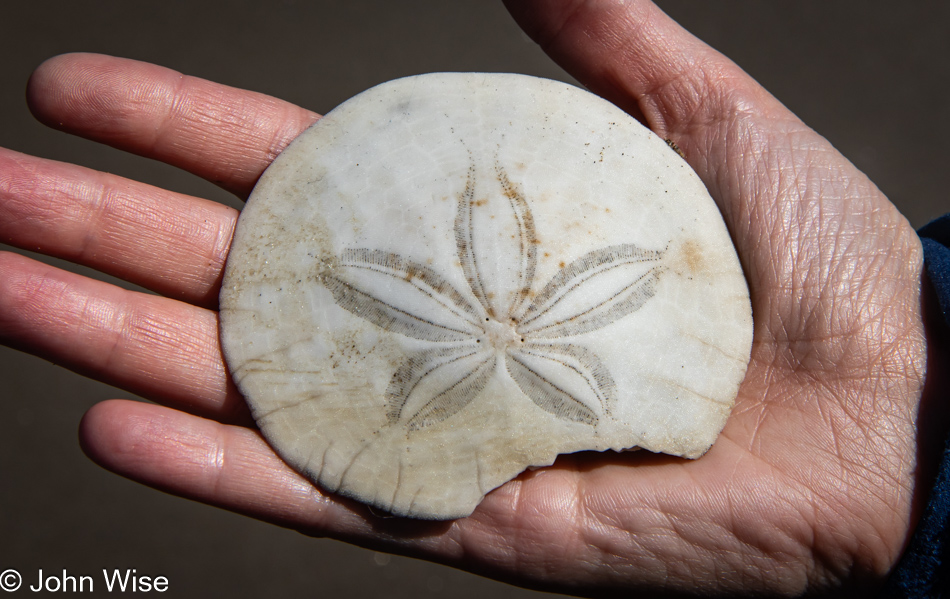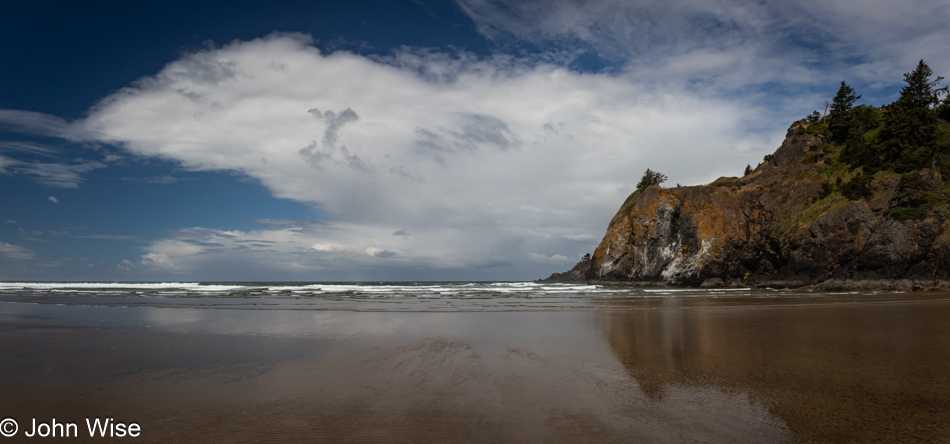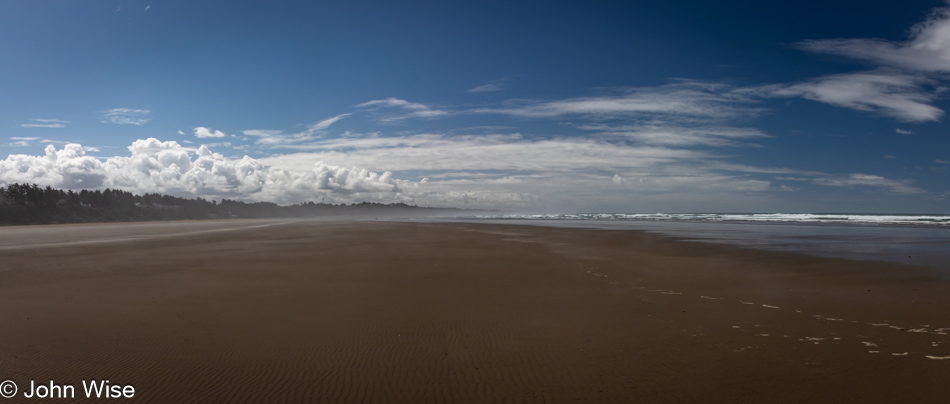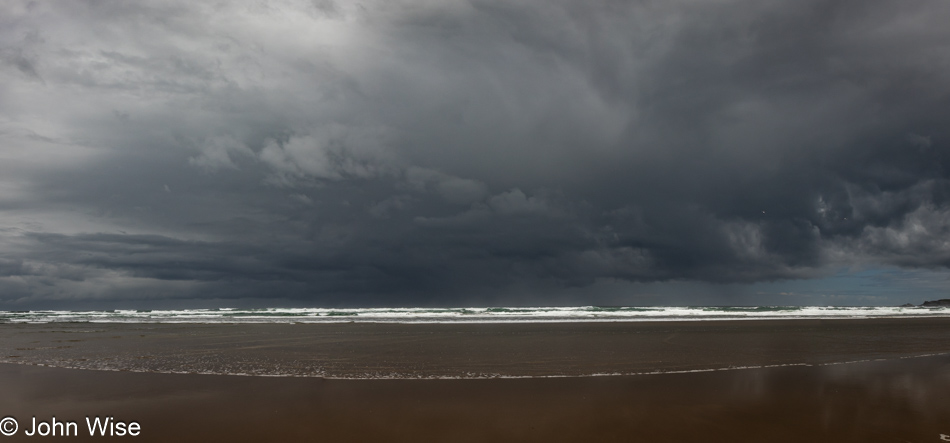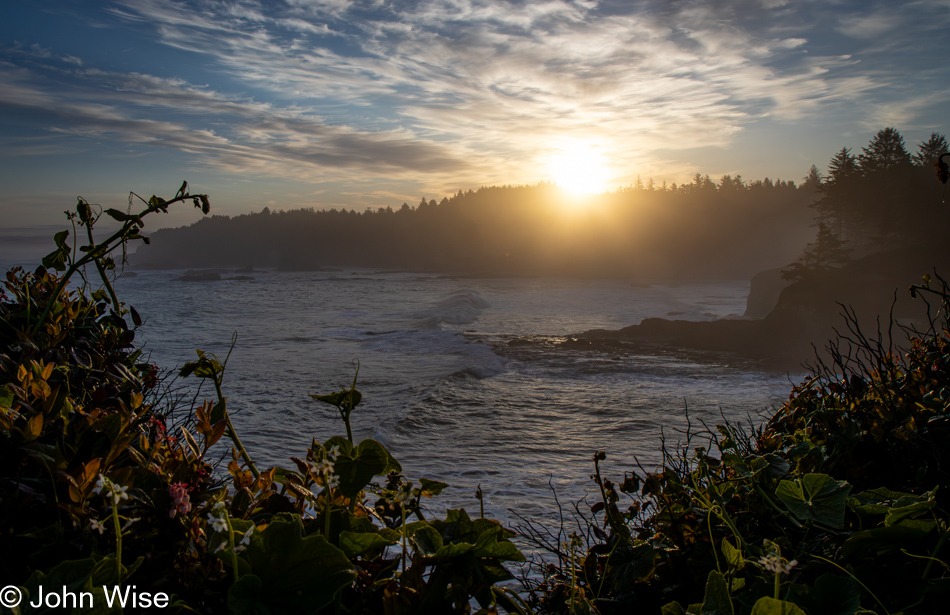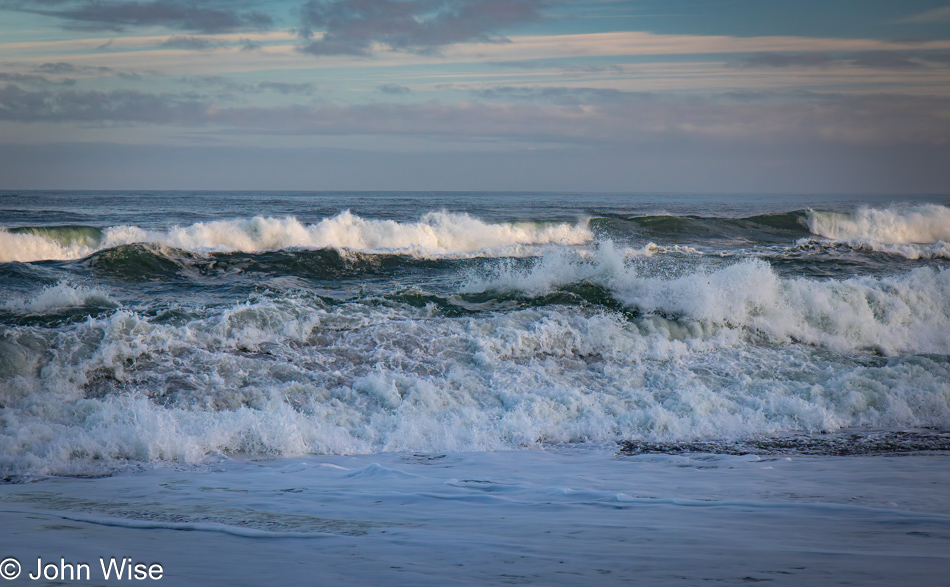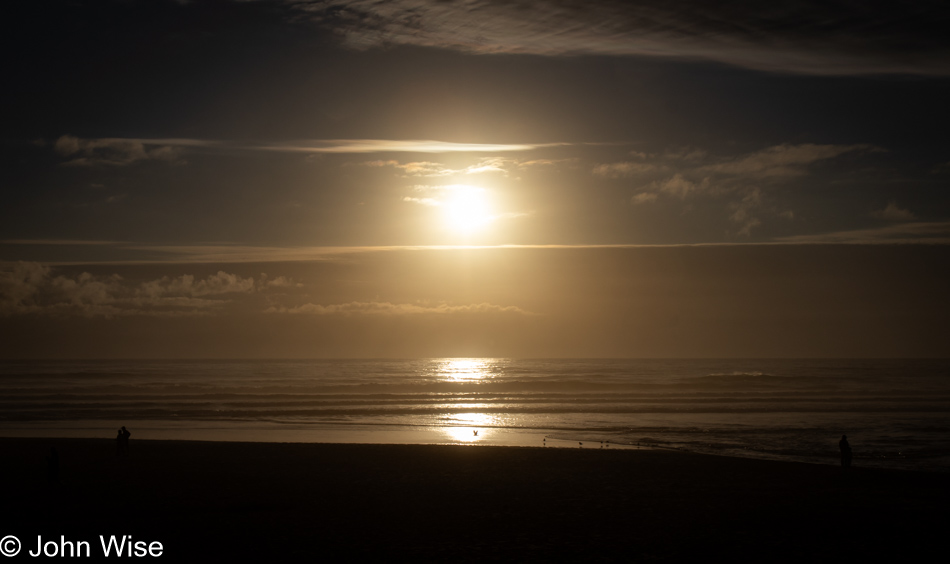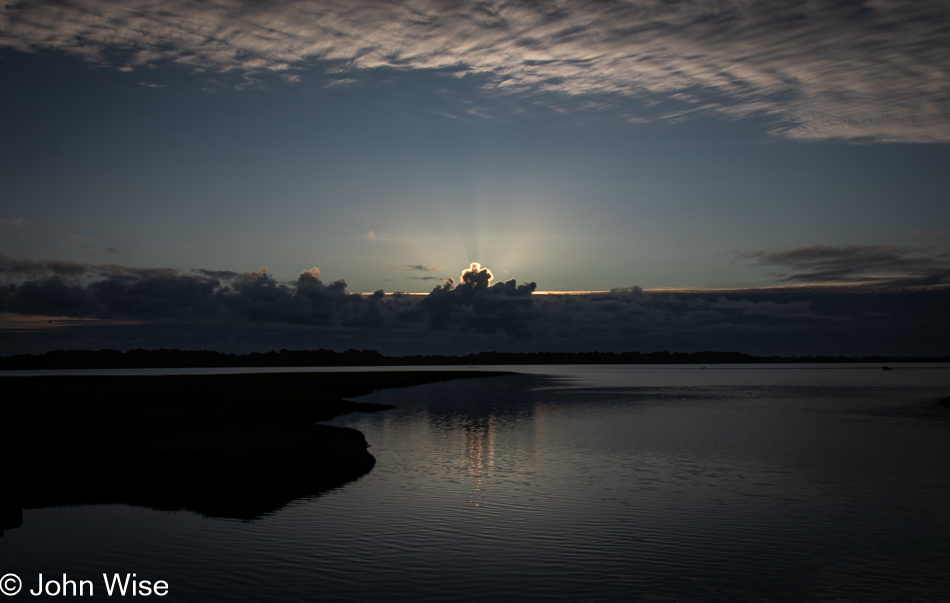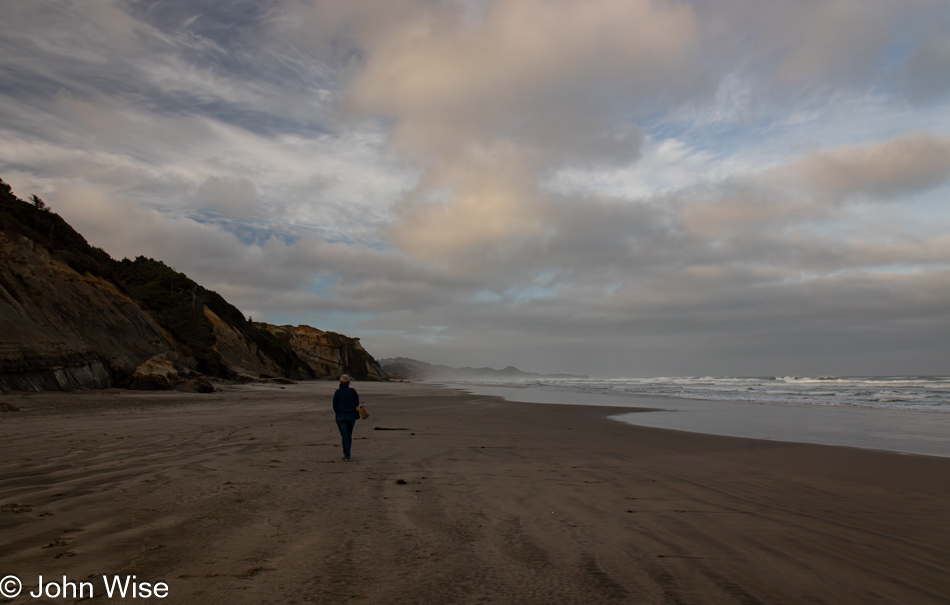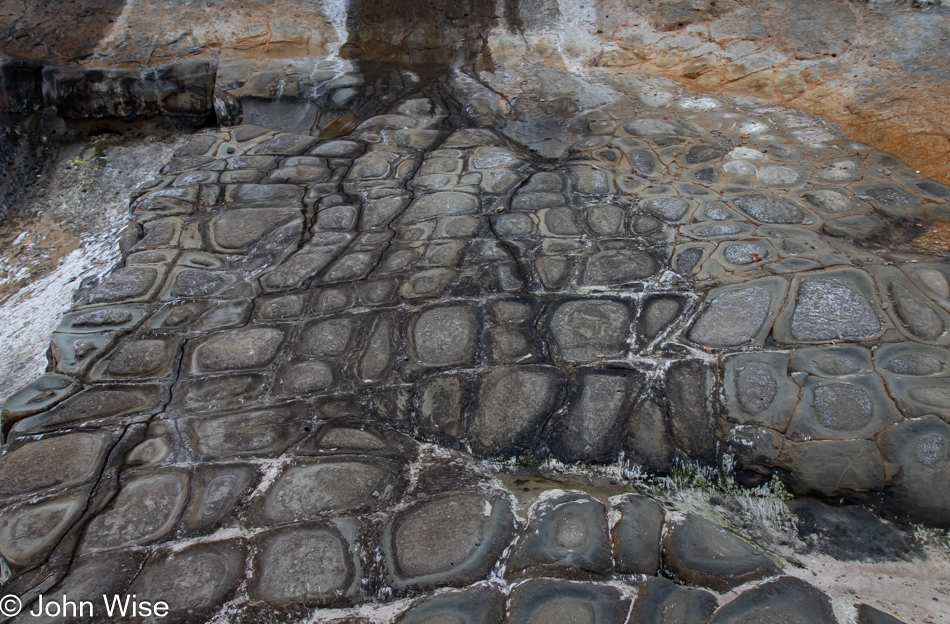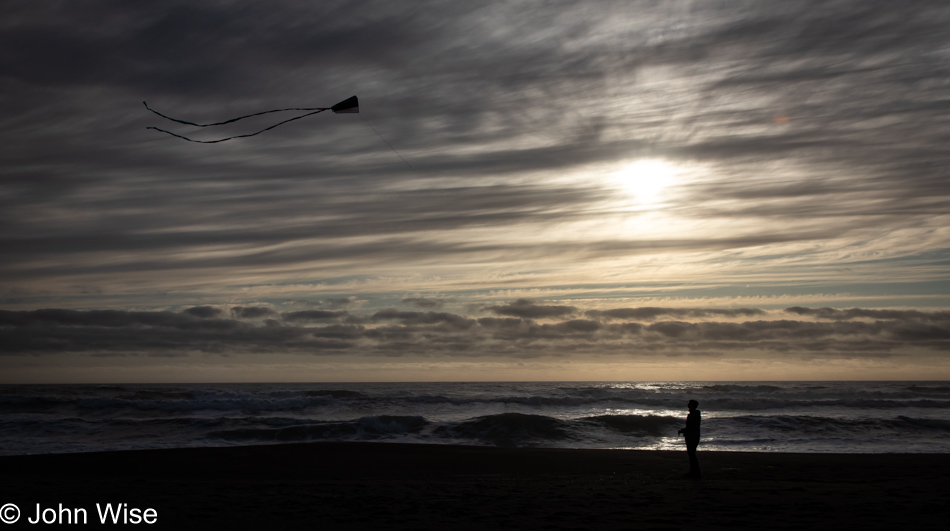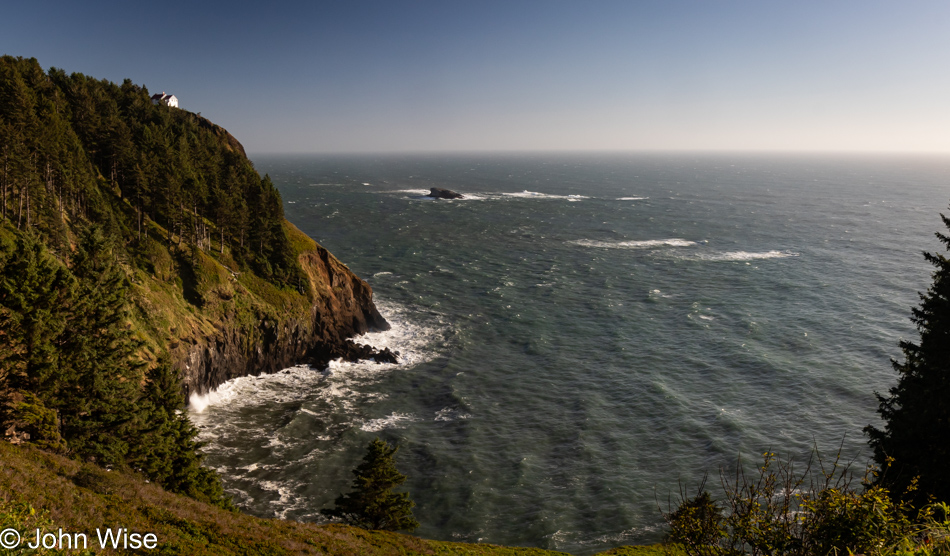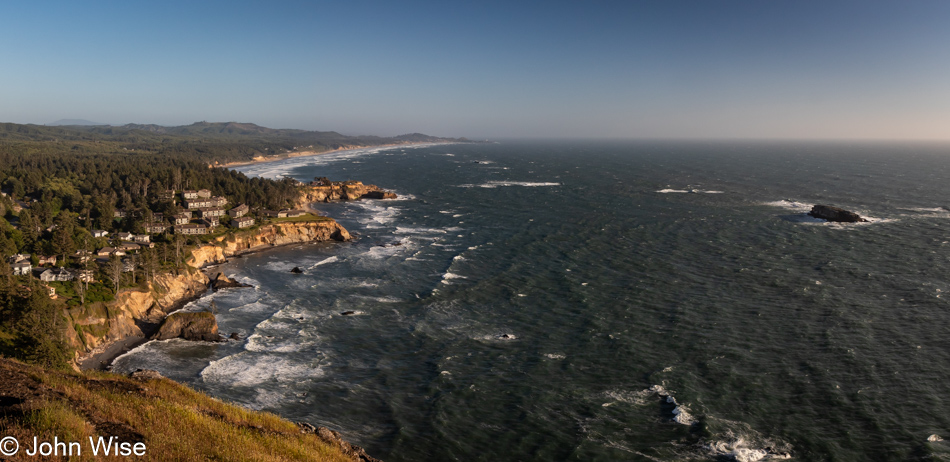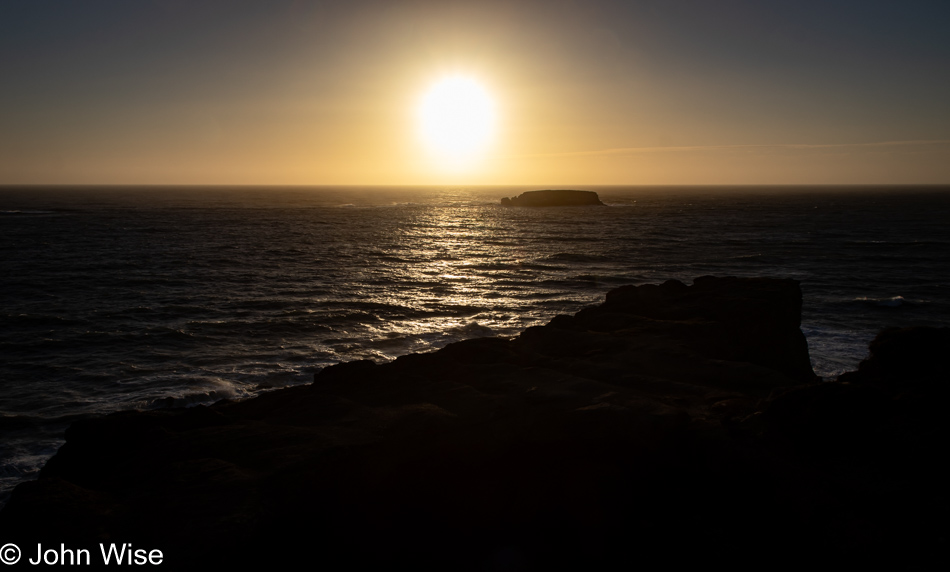
Waking to rain this morning made our decision to lazy it up an easy one. Who wants to wander around at 5:30 in the morning when the sky is leaking? Plus, it’ll stop in a minute, right? By 8:00, still without having stepped a foot out of the house, Caroline went to her temporary office on the veranda while I grabbed an umbrella and headed up the road for some requisite shopping. It felt like we could afford to squander a day in which zero steps might be a reasonable goal. Heck, in our first week hanging at the Pacific, we’ve averaged more than 18,000 steps a day, or about 8.5 miles (14km). Regarding shopping, life on the coast in a small town had a particular reality crash into me this morning; unless you eat SAD (Standard American Diet), you are going to spend a good amount of time tracking down your groceries because there’s not one store where you can get everything you need if you enjoy a broad-spectrum diet influenced by other ethnicities. Two hours later, I was back in Depoe Bay, and while the rain had stopped, it was still cloudy. Caroline was working, so walking would have to wait. And then it happened: after dinner, flipping the coin to see if we should hit the trail and move the needle to at least a minimum of movement, we opted not to go full-on lazy. At the oceanfront, we turned right, but not before grabbing this photo of the silvery sea.
WARNING: The rest of the post is not really about the joy of being out here. It’s a rant and one that’s probably been said far too often on this blog. Skip the rest. Oh, you can look at the photos and enjoy them. Allow the images to inspire you to visit the Oregon Coast, but leave the words unread. Grumpy old John was in lamenting mode.

Caroline identified the Agnes Creek Open Space up the road as somewhere we might want to take a short walk, and so without a better suggestion, it seemed as good as anything else. Except, it was a wonderful little enclave of nature being restored after having been clear-cut somewhere between the 1940s and 1960s. The date range is so wide because, apparently, nobody knows exactly when that was done. This brings up another opportunity for me to kvetch, this time about the nature of people and what we do in the name of progress and in the name of the lord. Inspired by the adage, “Idle hands are the devil’s tools,” Protestants and their industrious ideas of hard work having spiritual qualities created a kind of thinking that as long as a man was working, he was moving closer to God. But instead of honoring God’s creation, he’s been busy trying to scrape clean the Garden of Eden he’s been supplied.

We tear down nature to build churches and temples but end up destroying the safety net of Earth that sustains life. For at least 10,000 years, and up to possibly 20,000 years, the various Salish tribes, including the Tillamook, Siletz, Yaquina, Alsea, Siuslaw, and Coos people, lived here along the coast in all seasons without having to deforest the land, clear large areas so individuals could have palatial oceanfront mansions, and turn beautiful, wooded areas into golf courses. The idea that God imbued the land with a bounty for our taking is a manipulation that clears our consciousnesses of guilt for having such greed. It seems like self-evident truth that living in a balance of harmony with not only the land, sky, and water but also with the people who first called these places home would be in keeping with the alleged lessons of God, where in Genesis 2:15 of the Old Testament it says, “And the Lord God took the man and put him into the garden of Eden to dress it and to keep it.” It does not say to rape it, shit on it, and turn it into some de Sade-like pornographic horror of satisfying the whims of commerce, but that’s what we do.

By and large, it’s what we are doing to this day. Women in our country are free for all appearances, but 101 years after the Equal Rights Amendment was proposed, it is still not ratified. It was only in 1978 that the American Indian Religious Freedom Act allowed Native Americans to practice their traditional religions. And even here in the early 21st century, we had a recent president who rolled back laws that protected the climate, clean air, clean water, endangered species, and opened up more offshore drilling. That man was applauded for his actions by the religious right and captains of business who have everything to gain by employing their minions to keep taking more as long as it benefits the bank accounts of those who can never be satisfied.
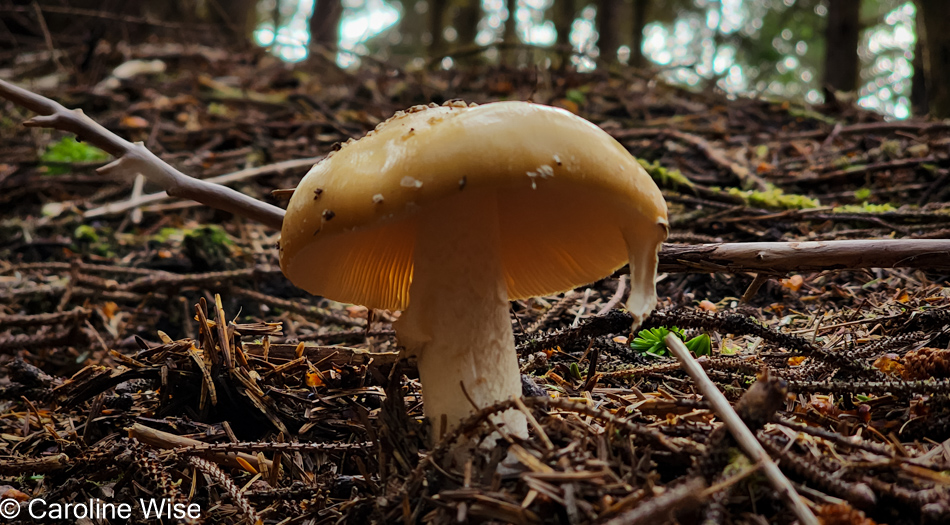
Elon Musk stands in front of his phallic spaceships, Mark Zuckerberg flaunts international law to privately move his super yacht, and Larry Ellison buys the Hawaiian island of Lanai as the system of wealth grows exponentially for a few and the masses continue to toil for a relative pittance while doing the bidding of those who gather opulence while not giving a care if a wild mushroom still grows in a rain forest. I’m not against capitalism, I’m NOT for communism, I generally enjoy the way life is, but I also feel like we need to make concrete moves to restore vast parts of our landscapes, not just 54 acres like here at Agnes Creek Open Space or some other random number of acres in various locations across America.

With the help of maybe somewhat questionable artificial intelligence found in Claude, it seems that we set aside between 10% and 15% of the space in a city for parks and recreation sites. San Francisco seems to lead the pack, with 19% of its lands dedicated to parks and open spaces, and with the environmental awareness of California being what it is, I’m guessing that maintaining a healthy ecosystem within those lands is a paramount concern.

I’m considering the arguments that could be made with my post so far: my perceived anti-capitalist stance, the anti-God stance, not taking into account our insurmountable drug problems, affordable housing problems, poor job opportunities, lack of education, the strain that a growing population would put on resources and infrastructure that many would say are presently inadequate, but reading off the litany of issues is simply a smoke screen to mask that we are doing next to nothing on all fronts. Small blossoms of growth needn’t be denied due to larger, seemingly intractable problems that fall on the shoulders of the common person instead of being driven by those extracting the kind of wealth that can build $500 million yachts because they have the voices and audiences of those who want to watch and listen to their musings.

And we are two of the lucky people. Caroline and I have the means to put ourselves in these environments where they do exist. We are able to carve out the time and see firsthand what the natural spaces between represent of our past, away from where the majority now live. This weird emphasis on a personal, private space called the single-family home for many arrives with a bizarre sense of ultimate freedom that can only be had behind bolted doors, clutching a weapon, watching our theater size TV screen, with a garage full of stuff we’ll never use can only be characterized as a madness brought on by the mass-hysteria instilled by advertising-driven engines of non-stop consumption. Try to notice how you are never enticed to visit free places where things such as moss-covered forest beds grow vibrantly green, well, unless it were part of a resort, which obviously isn’t free.

Caroline collected the scattered parts of this crab that, for some peculiar reason, a seagull must have dragged into the nearby forest for its lunch. After putting the crab back together, she took a photo with her phone; I came up and took this one.

This tiny pocket kite was likely the driving reason behind buying the other kite, which flies nicely indeed. This one, on the other hand, belongs in the trash and is a waste of resources. This is an instance when novelty and perceived convenience went awry in the design process, but the creators knew that suckers would buy the cute little kite with dreams of things taking to the skies like an underdog finding its mojo. Near the short trail we were just walking was a small beach access path to Nelscott Beach, where we were doing our best not only to get this kite to go aloft but also to catch up with our step deficit.

We tried rescuing the mussels and their attached barnacles that had broken free of their moorings, but once on land, they seemed to want to remain on shore.
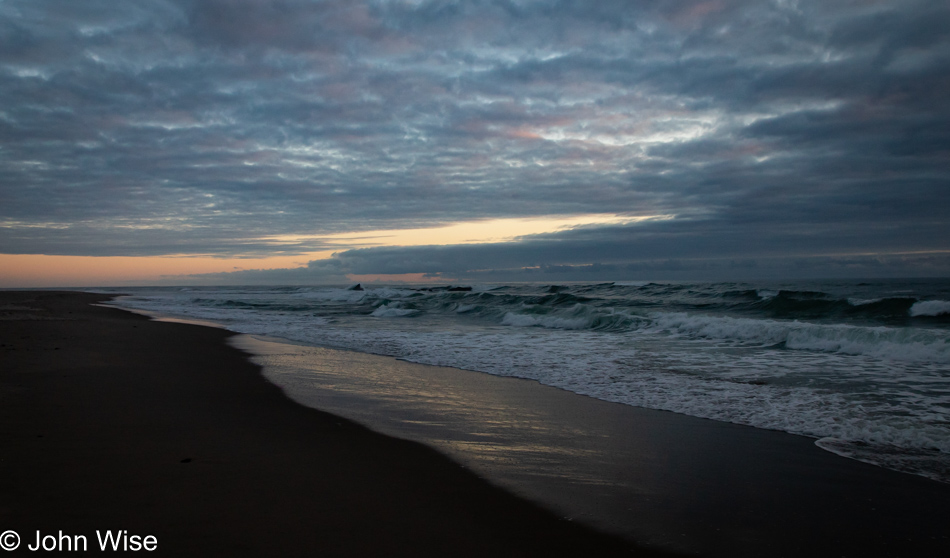
Should you have gotten to the end of this post after being warned not to go further, and you are wondering what happened to the prose extolling love, beauty, passion, and the intensities of vacation-like days, that writing is being saved for my novel. This stuff, when need be, is the exorcising of demons to allow the catharsis of spirit to explore beautiful ideas and sentence structures. Writing this, I’m brought to thinking how the majority of my work on this novel I speak of is written in a coffee shop with no view, with no inherent special qualities; for that, I have to look deep into my mind and imagination, likely the place where our experiences in these environments live.


